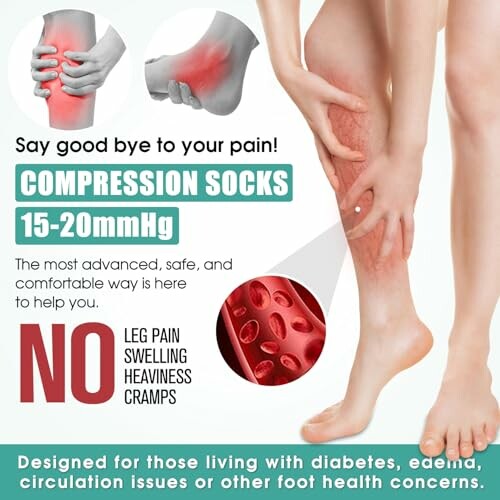
Comparing Medical Grade and Regular Compression Socks
Key Takeaways
- Medical grade compression socks are designed to provide specific graduated compression for health needs.
- Regular compression socks offer comfort and mild support for casual use.
- Understanding your travel needs can help determine the right type of compression sock.
- Features like material, level of compression, and fit are crucial when selecting the perfect socks.
- Consulting with a healthcare professional can guide decisions on medical-grade options.
Compression socks have become essential for many travelers, particularly during long flights or journeys. As you prepare for your next adventure, it’s important to understand the differences between medical-grade and regular compression socks. While both types of socks offer benefits, they serve distinct purposes. Below, we'll break down the differences and guide you in selecting the right pair for your travel needs.
What Are Compression Socks?
Compression socks are specialized hosiery designed to improve blood flow in the legs. They exert pressure on the legs, which helps in circulation, particularly during long periods of inactivity such as sitting on a flight or a lengthy car journey. Here’s a closer look at the two main types: medical-grade and regular compression socks.
Medical Grade Compression Socks
Medical-grade compression socks are specifically made for individuals with health issues related to circulation. They are usually prescribed and come in various compression levels, measured in mmHg (millimeters of mercury). Below are some features and benefits:
Key Features
- Compression Level: Typically 15-30 mmHg, providing targeted support where needed.
- Graduated Compression: Designed to be tighter at the ankle and gradually loosen further up the leg.
- Custom Fit: Often available in different sizes to ensure proper compression and comfort.
- Quality Fabric: Made with moisture-wicking materials to keep feet dry.
Pros
- Helps reduce leg swelling and discomfort during long travels.
- Supports recovery from medical procedures.
- Recommended by healthcare professionals.
Cons
- Can be more expensive than regular options.
- May necessitate a prescription or consultation with a doctor.
Recommended Medical Grade Compression Socks
Laite Hebe 3 Pack Medical Compression Sock
Perfect for running, nursing, or sports. These compression socks offer excellent support for travelers.
Learn MoreRegular Compression Socks
Regular compression socks are geared more towards everyday use and casual travelers. These socks may not provide the same level of graduated compression as medical-grade options, but they still enhance comfort. Here’s what to consider:
Key Features
- Compression Level: Typically lighter, around 10-15 mmHg.
- Comfort Design: Focus on general comfort, suitable for daily wear.
- Stylish Options: Available in various designs, colors, and patterns.
Pros
- More affordable than medical-grade options.
- Wide variety of styles and colors.
- Ideal for casual travel, everyday use, or during sports activities.
Cons
- May not provide sufficient support for severe leg issues.
- Compression level may not suit everyone’s needs.
Recommended Regular Compression Socks
OrthoSleeve Medical Grade Compression Socks
Made with 15-20 mmHg compression, these socks provide excellent support for travel and daily activities.
See ProductWhen to Choose Medical Grade vs. Regular Compression Socks
| Criteria | Medical Grade Socks | Regular Compression Socks |
|---|---|---|
| Compression Level | 15-30 mmHg, adjustable | 10-15 mmHg, lighter |
| Best For | Post-surgery, specific conditions | Everyday comfort, light travel |
| Availability | Often requires prescription | Widely available in stores |
| Fit | Customized fit for effectiveness | Standard fit, various designs |
| Price Range | Higher cost | Generally affordable |
Conclusion
Understanding the differences between medical-grade and regular compression socks can significantly enhance your travel experiences. Medical-grade socks are ideal for those with specific health needs, while regular socks provide comfort for general use. Ensure to consider the length of your journey, any specific health conditions, and personal preferences when choosing your socks.
For further guidance on selecting the right compression socks, check out our How to choose the right compression socks resource. If you're looking for specific recommendations for different purposes, don't forget to visit our articles on Compression socks for long journeys or Benefits of compression socks.
Ready to get the right fit for your next trip? Browse our selection of medical grade compression socks and everyday compression socks to find the perfect pair!



